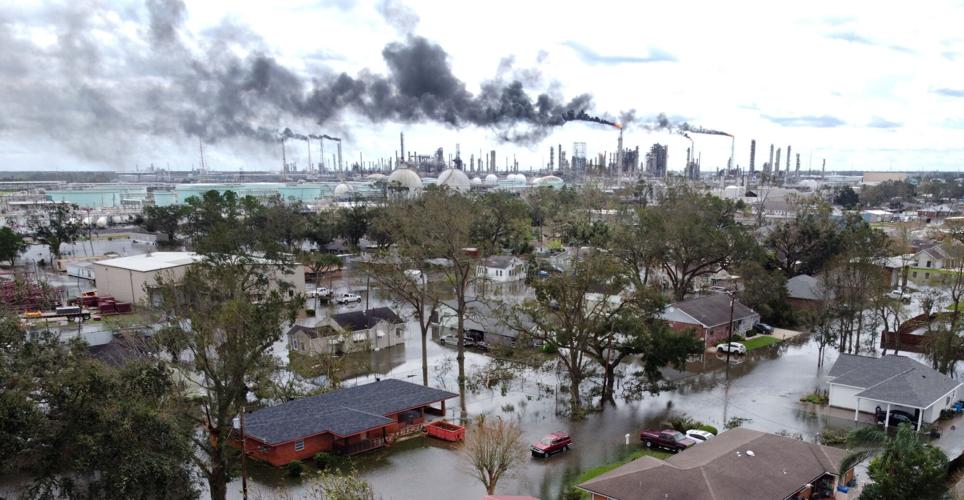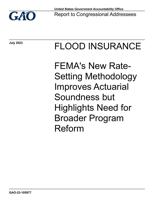WASHINGTON – Though a recent congressional auditor's report underscored points Louisiana lawmakers have long made about a new federal pricing strategy for flood insurance – like the strategy's penchant for pricing out low-income homeowners – some south Louisiana congressional leaders said Tuesday the analysis didn’t go far enough.
The Government Accountability Office's report, released Monday, stated that the Federal Emergency Management Agency's Risk Rating 2.0 pricing methodology is reversing a process that has since 2005 forced the government to borrow $36.5 billion from the nation’s taxpayers to pay the recovery costs that the insurance policies cannot.
FEMA had been increasing premiums for years to uphold its congressional mandate to keep prices low while keeping the National Flood Insurance Program, NFIP, fiscally stable. It introduced Risk Rating 2.0 to better align a flood insurance policy’s price to an individual property’s risk of flooding, officials have said.
In December 2002, the median annual premium was $689. But that price will need to increase to $1,288 to fully cover risks, according to the GAO. About 9% percent of current policyholders, mostly along the Gulf Coast, will eventually see their prices increase by 300% or more.
“This GAO report acknowledges that flood insurance is unaffordable, but it assumes that FEMA’s methodology is the only way of complying with Risk Rating 2.0. This is simply not true,” U.S. Rep. Troy Carter, D-New Orleans, said Tuesday. “There are many alternative ways that the NFIP could choose to calculate this risk. Clearly, FEMA has washed their hands clean of the mandate to provide affordable flood insurance.”
GAO report on Flood Insurance pricing, July 31, 2023
The GAO, the so-called “government watchdog” for Congress, is run by a commission whose members are chosen equally by opposing party leadership.
Risk Rating 2.0, which began in April, limited annual premium increases for most policyholders to no more than 18% annually. The GAO calculated that by 2037, when 95% of current policies reach their full risk premium levels, the program would be spending $27 billion more than premiums collected.
“An alternative to caps on annual premium increases is a means-based assistance program that would provide financial assistance to policyholders based on their ability to pay,” the report stated. The assistance would be paid as a line item in the federal budget and would be more predictable than Congress's usual practice of passing a bill to pay for recovery once a major disaster strikes.
Many in Congress argue that the flood insurance program could pay for itself but for major hurricanes and flooding events.
“The premise of the GAO report and Risk Rating 2.0 are both flawed,” U.S. Rep. Garret Graves, R-Baton Rouge, said Tuesday. “This isn’t just about means-testing. That’s a false solution. What about the millions that live in homes that fully complied with FEMA standards when they built their houses months, years, or decades ago? This is FEMA both hiding the football (in terms of how they determined the new rates) and moving the goalposts (in terms of changing the base flood standards for homes that were built months, years, decades, or even centuries ago).”
At a Senate Committee on the Budget hearing July 26, Gov. John Bel Edwards said one of his biggest frustrations has been that FEMA’s rates don’t account for levees, structural elevations and other projects aimed at lessening the impact of flooding.
The GAO also faulted FEMA for not telling policyholders what factors go into Risk Rating 2.0 and how each variable is weighted when determining premium prices.
U.S. House Majority Leader Steve Scalise, R-Jefferson, said Tuesday: “This GAO review echoes my serious concerns about transparency and affordability with Risk Rating 2.0 and makes clear that FEMA has failed to properly explain and communicate with policyholders and Congress on the details of its data and methodology.
“As policyholders in Louisiana and across the nation face skyrocketing premiums, they have been kept in the dark by FEMA’s Risk Rating 2.0. It’s no surprise then that GAO’s report exposes an alarming drop in NFIP policies, likely the most significant drop in recent history, which not only threatens the solvency of the entire NFIP, but also leaves both policyholders and taxpayers dangerously exposed to tomorrow’s storms,” he added.
Others criticized the GAO analysis for not evaluating other factors caused by the increase rates.
“Sen. Cassidy requested GAO estimate what Risk Rating 2.0 would do to property values and local government revenues, which they decided not to include,” said Joe Ramallo, a spokesperson for Sen. Bill Cassidy, R-Baton Rouge. “The report was not able to address all of our concerns about Risk Rating 2.0.”
On June 28, Cassidy and Mississippi’s two senators asked the GAO to address the impact of higher premiums on property values, since an estimated 20% of the policyholders have dropped their flood insurance coverage.
GAO spokesman Chuck Young said the agency didn't go into property values because the housing market has been extremely volatile in recent years. Property values also are reliant on the local economy, interest rates and other factors, of which flood insurance is only one component.
"While we considered such an analysis early on, we did not evaluate these potential effects as part of this report because attempting to isolate the effect of one single cost factor on property values would require such a significant qualification of any results it would not meet our quality assurance standards," Young said in an email. "We focused instead on analyzing the affordability of premiums."
Cassidy joined with New Jersey Democratic Sen. Bob Menendez, Louisiana Reps. Carter, Clay Higgins, R-Lafayette, and other lawmakers in sweeping legislation to update the National Flood Insurance Program, which includes creating a program to help low-income homeowners and businessowners to purchase policies. That bill awaits a hearing.
“There was good analysis in the report, including the portion that highlighted affordability is key to the long-term survival of the program,” Ramallo said.



